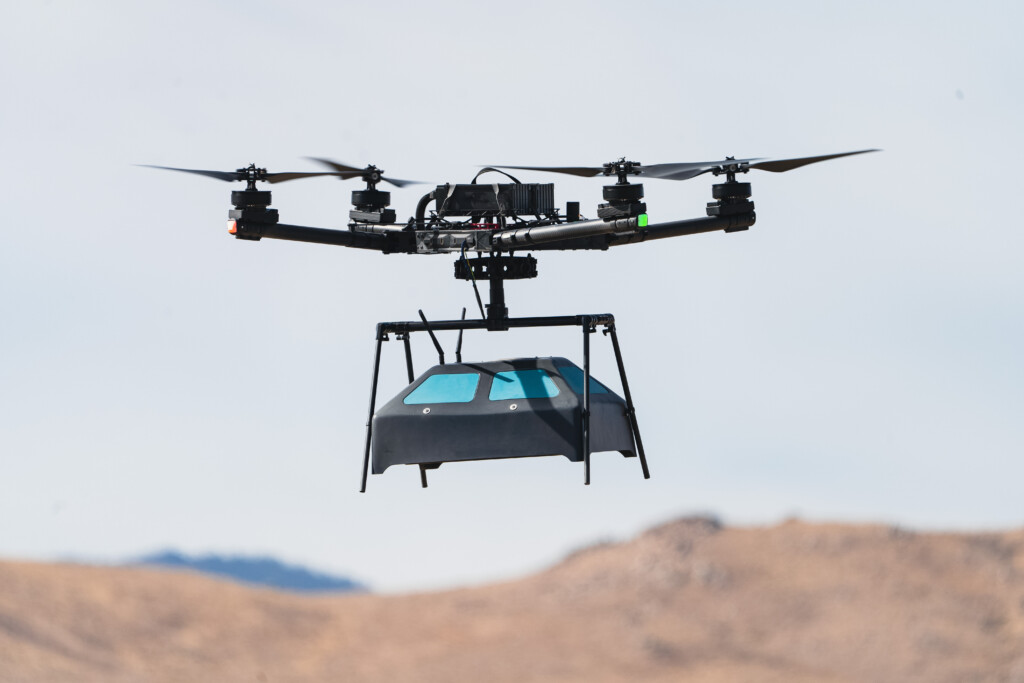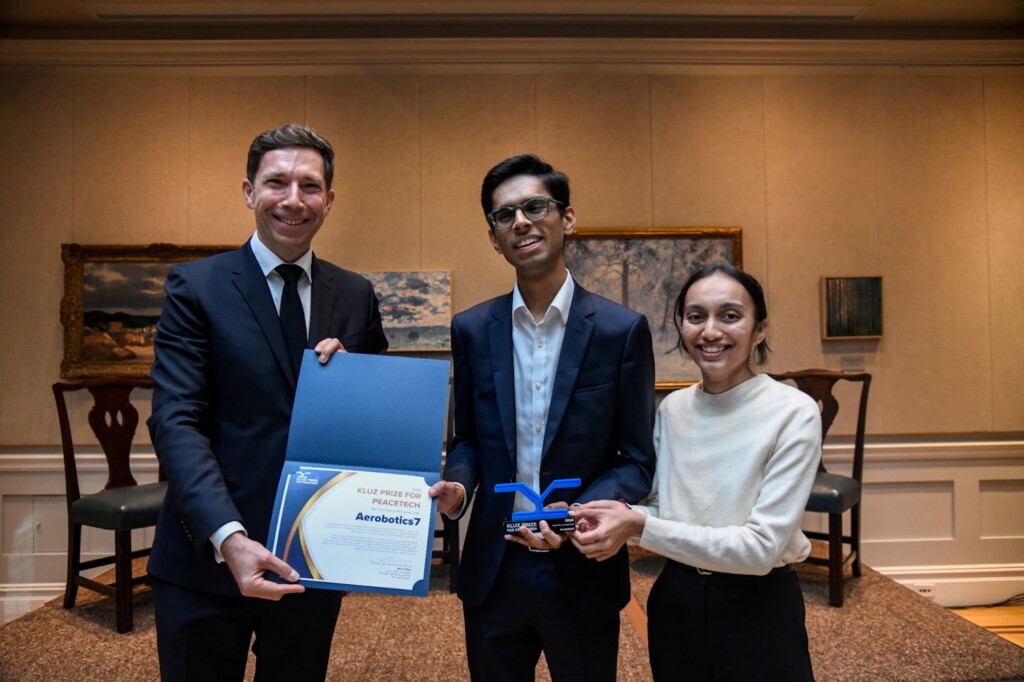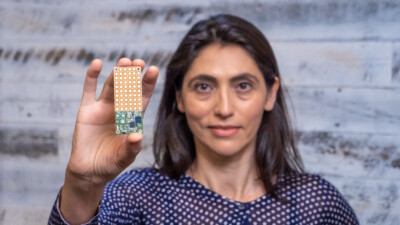Equipped with mostly self-directed education and a strong sense of purpose, Harsh Zala dedicates his intelligence and skills to saving lives.

Since the age of nine, Harshwardhan Zala has been passionate about technology. He grew up in a small town in India and was the first engineer in his family. At a young age, he enjoyed building solutions and devices to solve daily problems for his family and community. For example, to help his mother clean the house quickly and efficiently, he built a robot with a small mop that sensed and detected walls and obstacles. He also created a solution to help his school save electricity when students forgot to turn off the lights and fans.
“Funny story,” said Zala, “I was walking past my neighbor, who was an undergrad student. He was solving this issue with one of his capstone projects, and I happened to know the solution, so I offered it for free. He ended up winning first prize, which was a big shock to me. But then he introduced me to his friends and colleagues, other students, which led to me building Robosoft Group, a school-led initiative helping undergrad and graduate students with their projects.”
And that’s how Zala became an entrepreneur at age 11. While helping others solve problems, he eventually met Urvashi Kikani, an aerospace engineer with whom he later cofounded Aerobotics7 to address the devastating effects of active landmines that remain undetected around the world.
“The pivotal moment came when I was 12,” he said. “I saw a photo of a young kid who lost both his legs due to landmines. That was a shocking moment. I realized how severe the problem is and the massive scale of it. It’s estimated there are more than 100 million active landmines still buried in 60-plus countries, and solving these issues still relies on human deminers, risking their lives, whether it’s through metal detectors, sweeping it and spending hours in a small patch of area, or using other methods like sniffing dogs and rats, putting everyone in danger. What I realized is, as wars have ended throughout the decades, these explosives still impact not only communities, but businesses in the economy of these growing countries.”
Zala noted that in active conflicts around the world, many military casualties occur because of undetected, noncombat threats, including landmines. Traditional demining methods, such as breaching, in which the military uses explosive line charges to clear a path, have varying efficacy.
“That was the first starting point for me to realize the scale of the problem, where the current solution stands, and how we can solve it. Of course, I was 12, I was too young to really think about all the aspects of it, but I was determined to make this my personal purpose,” said Zala. “I pivoted from Robosoft Group, started building robots to see if we could deploy them on the ground, but the issue was, being on the ground, it had a risk of blowing up itself, and it’s slower than drones.”
As such, he redirected his focus on building drones and created a few prototypes. His intention was not necessarily to replace humans with drones, but to provide humans with a scalable, remote capability that would increase detection accuracy.

“The primary challenge of detecting these mines, and why these casualties happen, is because most of the new, modern types of mines, or IEDs, are made out of nonmetallic components, mostly plastic, and these are very hard to detect using the traditional detectors, and oftentimes missing them creates a lot of casualties,” said Zala. “But it’s also the slowness in the detection efforts that they have to go through. So, the goal became to build a radar system that is focused on detecting these nonmetallic threats buried under the surface, and detect and identify them with the highest amount of accuracy possible.”
Three years ago, Zala moved to the U.S. and started a company with his cofounder. It began more as a research project, and they started working with governments around the world to understand the problems, the demining industry, and companies and nongovernmental organizations leading the charge.
They were met with resistance at first, being very young and pitching a solution that required a paradigm shift away from traditional thinking. Zala realized that to change people’s perception, he would have to show them prototypes and provide metrics to support his claims.
“We ended up receiving 96% accuracy in detecting nonmetallic threat types found in Ukraine, which led us to receive a letter of intent from Ukraine’s Ministry of Defense,” said Zala. “Then, we started working on the same problem statement with the U.S. Army and the DoD, as more and more of our war fighters lost their lives because of not being able to detect these threats, and it ended up becoming a critical, urgent need throughout our NATO allies and partners.”
One of Zala’s challenges was improving the drones to ensure they maintained stability while flying at slower speeds. Most drone models were designed for high speeds, but Zala needed a drone to hover steadily and slowly. Another challenge was creating a sensing system that could detect threats underground. Zala and his partner focused their efforts on the sensing system and collaborated with manufacturers to build the right drone.
The team’s Eagle A7 system builds a 3D point cloud three meters below the Earth’s surface, and an AI model identifies a specific pattern for its targets, rather than detecting the presence or absence of a mine or deviations in soil properties. As the system collects data in real time, it trains the AI model to adapt to and detect new threats.
As countries withdraw from the Ottawa Treaty, which bans anti-personnel landmines (mines that target humans), and billions of dollars continue to be spent on advancing military technology, Zala and his team call for an increase in PeaceTech funding and technology to support conflict prevention and recovery.
Last year, Aerobotics7 won the 2024 Kluz Prize for PeaceTech for its Eagle A7 drone technology, demonstrating that Zala and his team have moved well beyond research and baseline prototyping. From humble beginnings and a desire to positively impact individuals’ lives, they have grown their technology into a sophisticated, autonomous, AI-enabled solution to tackle one of the world’s most overlooked problems.

“It’s always hard. Every career we choose is hard, so the amount of leap you want to take comes down to your purpose and why you want to do it,” said Zala. “The only thing that kept me going and will keep me going to the finish line — seeing a world without landmines — is the big vision of using technology to support these communities, support children and people dying and losing limbs because of how we can utilize the power of technology to safeguard these countries and safeguard lives at a massive scale. And if no one else is thinking about it, then someone has to, and if I’ve taken that leap, I’m sure people will follow, and they will start leading it.”
Learn more about Aerobotics7 by visiting aerobotics7.com, and read more coverage on Eagle A7 at our sibling publication, Design World, by visiting designworldonline.com/eagle-a7-prevents-landmine-casualties-with-drone-mounted-ai.




